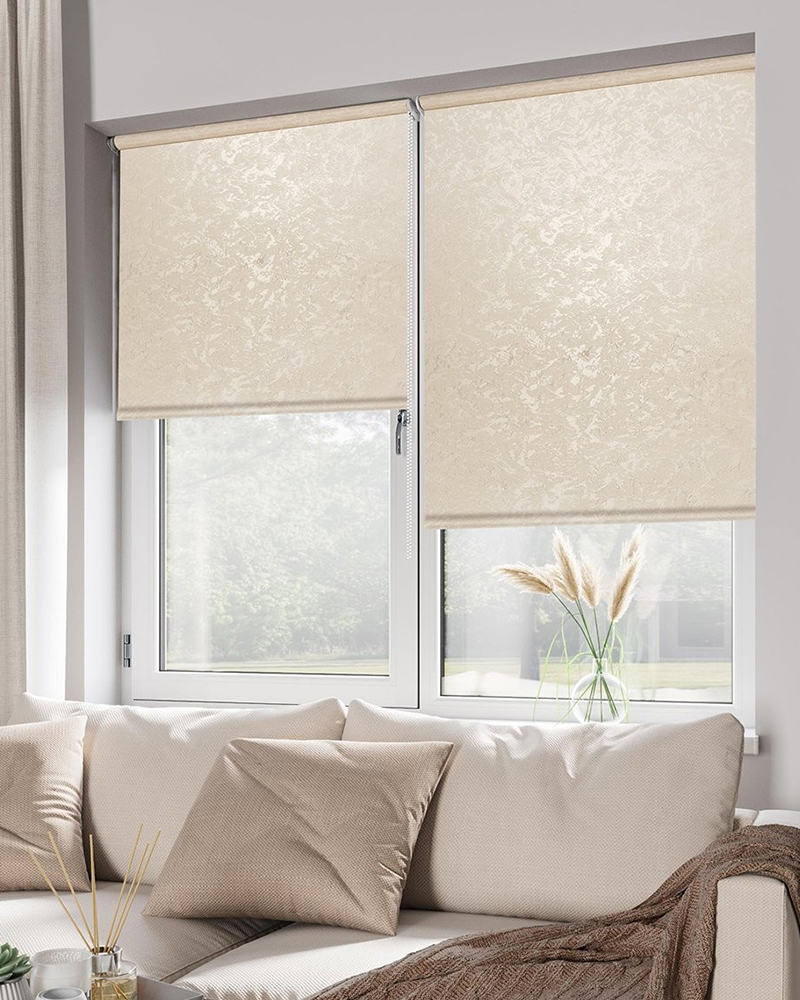
As an important part of modern indoor shading system, Roller Blind Fabric is widely used in family homes, office buildings, hotels, schools and other spaces. It not only undertakes the basic functions of adjusting light and protecting privacy, but also plays an active role in energy saving and consumption reduction, and improving the aesthetics of space. Faced with the diverse needs of light control in different environments, modern roller blind fabrics have successfully achieved an organic balance between light blocking and light transmittance through various means such as material selection, weaving technology and functional processing, meeting the needs of users in different scenarios.
From the perspective of material selection, roller blind fabrics are mainly divided into polyester fiber, glass fiber, natural cotton and linen, and blended materials. Different materials determine their basic light transmittance and light blocking properties. For example, polyester fiber fabrics with high-density weaving technology have good light blocking effects and are suitable for bedrooms, audio-visual rooms and other spaces that need to be completely shielded from light; while thin and breathable glass fiber or sparsely woven cotton and linen materials retain a certain degree of light transmittance, which is suitable for living rooms, offices and other areas that require natural lighting but want to reduce direct strong light. This difference in materials provides users with a diverse selection basis.
Improvements in weaving technology are the key to achieving a balance between shading and light transmission. Traditional roller blind fabrics often have an "either-or" problem - either complete shading affects indoor lighting, or excessive light transmission leads to insufficient privacy. Today, many manufacturers have developed "semi-shading" or "daylight-adjustable" fabrics by precisely controlling the warp and weft density. While allowing soft light to enter during the day, it can effectively block ultraviolet rays and strong sunlight, avoiding indoor temperature increases and furniture fading. In addition, some high-end products have also introduced a "microporous structure" design, which improves air circulation and visual transparency without affecting the overall shading effect.

The application of functional coatings and post-processing technologies makes roller blind fabrics perform better in shading and heat insulation. For example, in the pursuit of extreme shading, manufacturers will apply a layer of black opaque coating on the back of the fabric to completely block external light from entering the room and create a dark sleeping environment. In office spaces or meeting rooms, fabrics with "reflective coatings" are more likely to be used. Such materials can not only adjust the intensity of light, but also effectively reduce solar radiation heat, improve air conditioning efficiency, and achieve the purpose of energy saving and environmental protection.
With the improvement of consumers' aesthetic needs, roller blind fabrics not only take into account functionality but also focus on decoration. A large number of roller blind fabrics with textures, patterns or color changes have appeared on the market, which can not only meet the actual needs of shading and light transmission, but also coordinate with the interior decoration style to enhance the overall aesthetics. For example, in an open office space, light-colored translucent fabrics can ensure lighting and maintain a certain degree of privacy; in children's rooms or kindergartens, cartoon patterns or colorful fabrics can add vitality and fun.
The introduction of intelligent control systems has further improved the practicality and flexibility of roller blind fabrics. Nowadays, many smart home and office systems already support electric roller blinds, and can automatically adjust the opening and closing degree with light sensors, and dynamically adjust the shading and light transmission ratio according to time, weather and usage scenarios, which not only saves energy but also improves user experience.
Roller blind fabrics have successfully achieved a good balance between light blocking and light transmission in home and office environments through material optimization, weaving technology innovation, functional processing and intelligent control. It not only meets people's needs for light management, privacy protection and energy saving, but also provides more possibilities for modern interior design. In the future, with the in-depth promotion of the concept of green building, roller blind fabrics will continue to upgrade in the direction of environmental protection, health and intelligence, and become one of the important elements for creating comfortable and livable spaces.